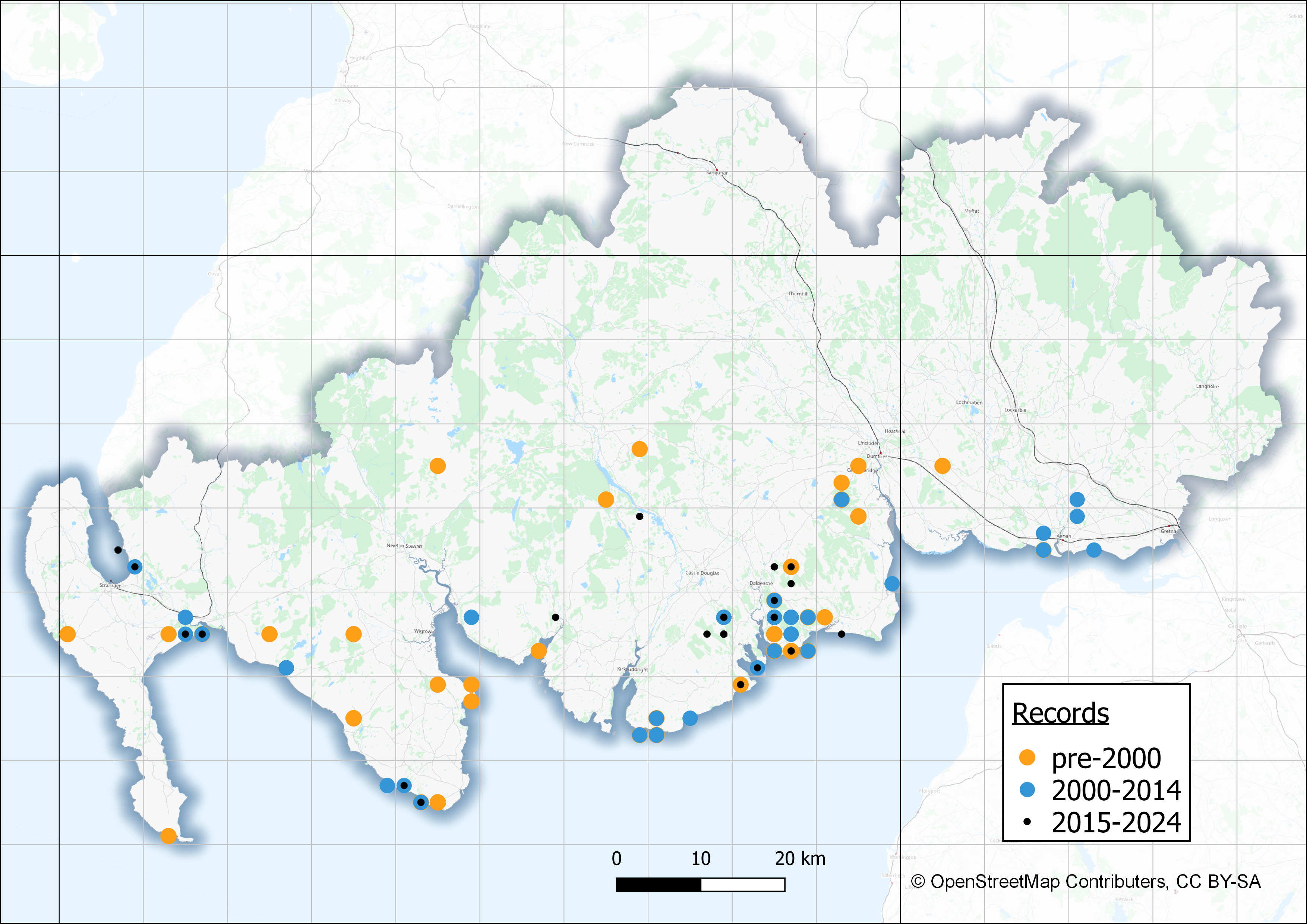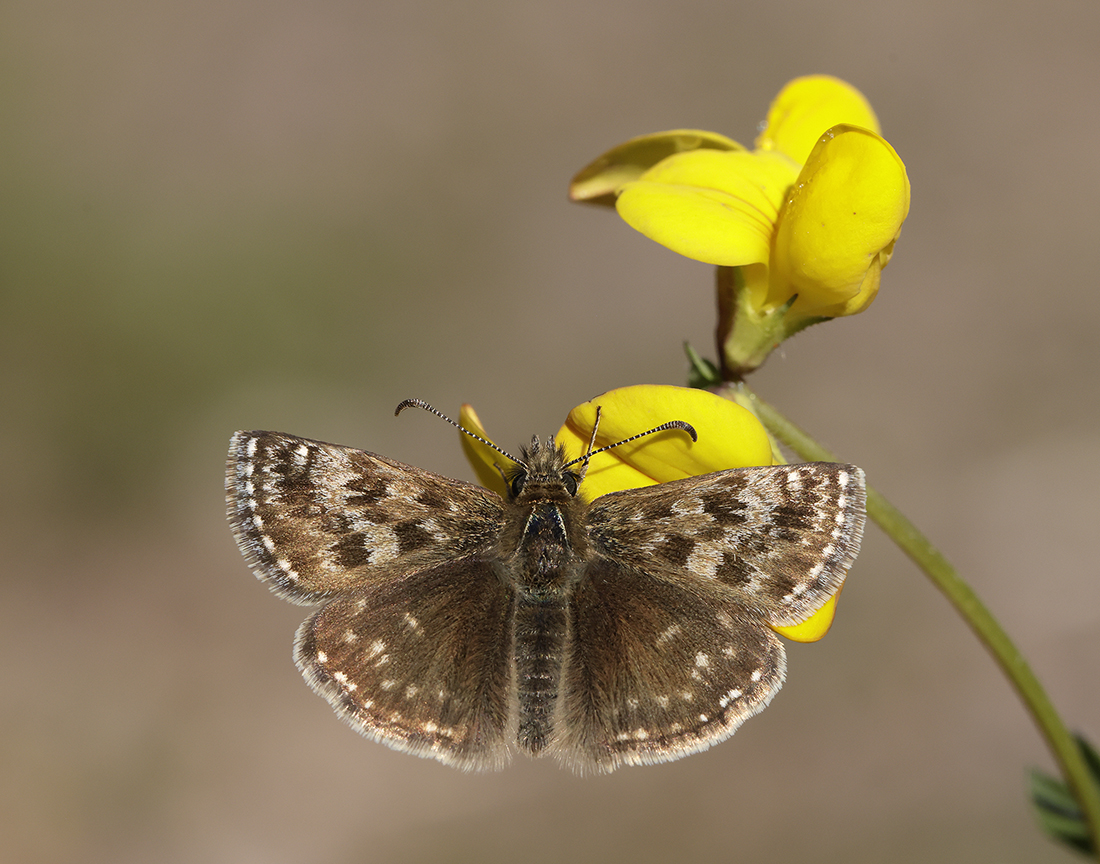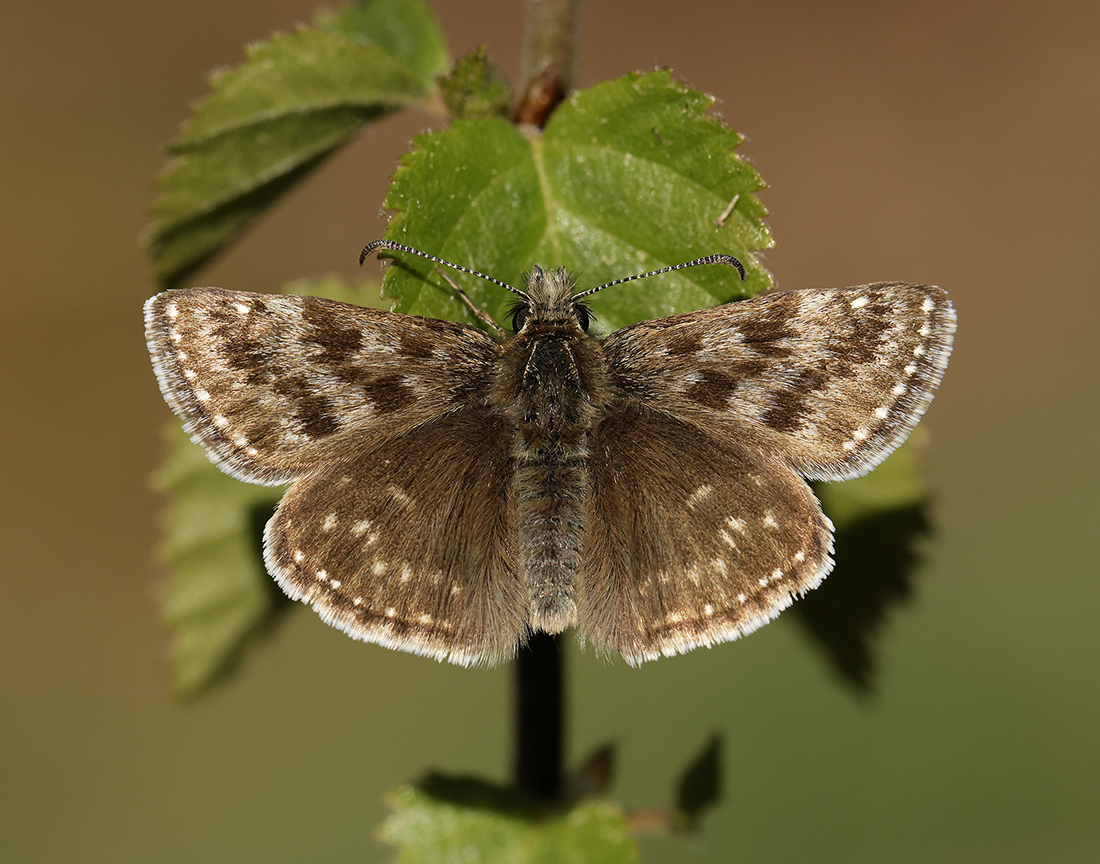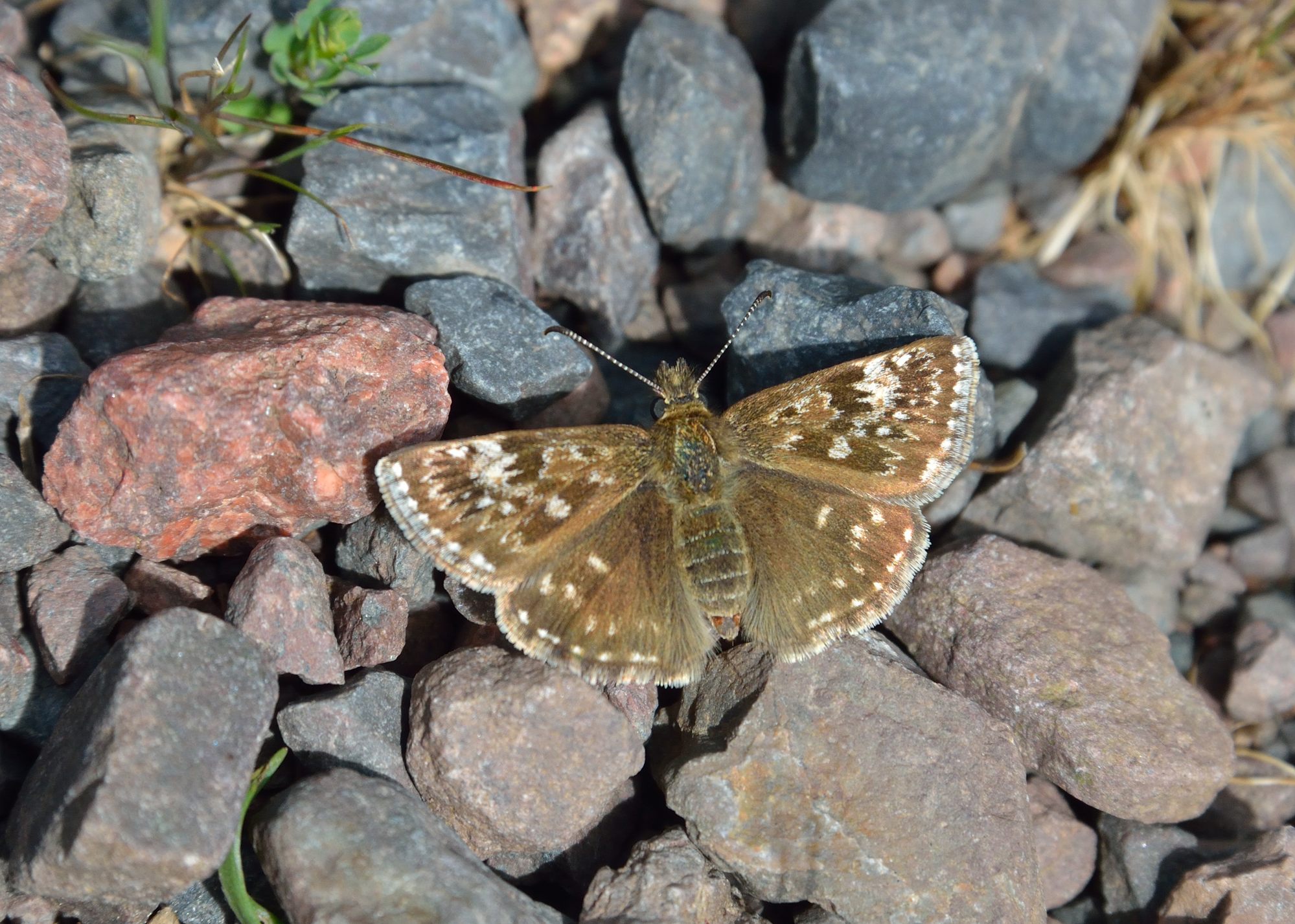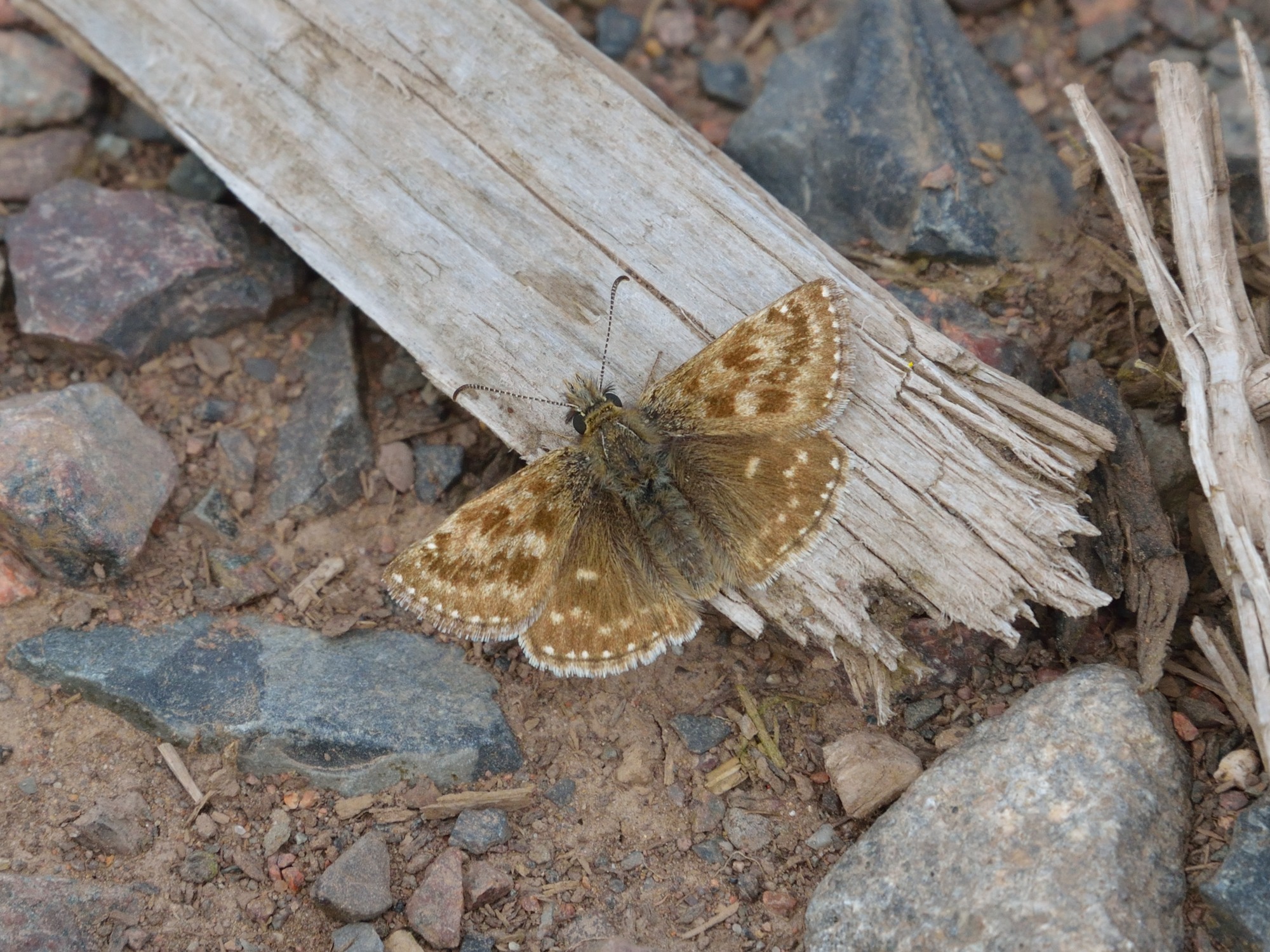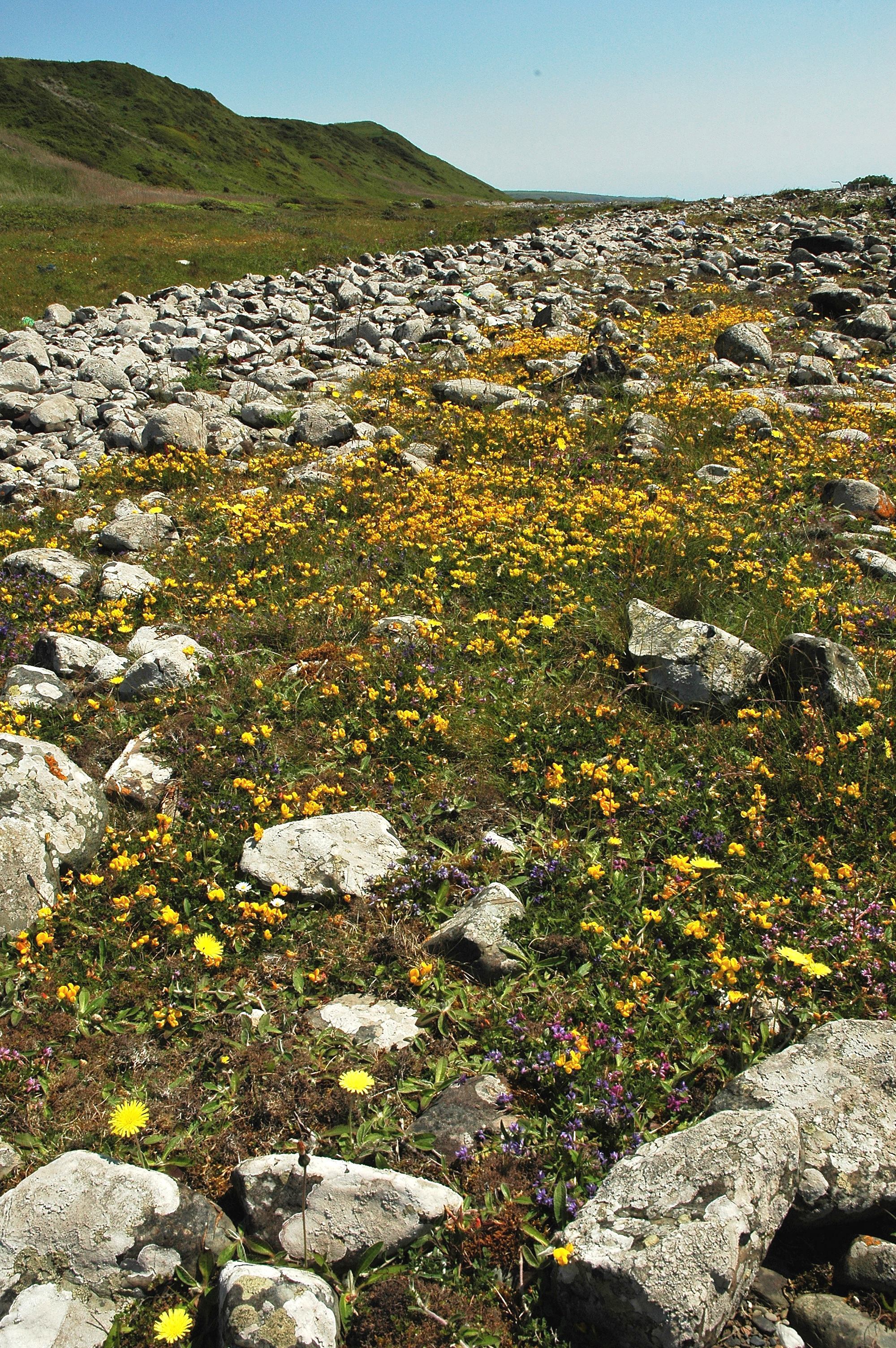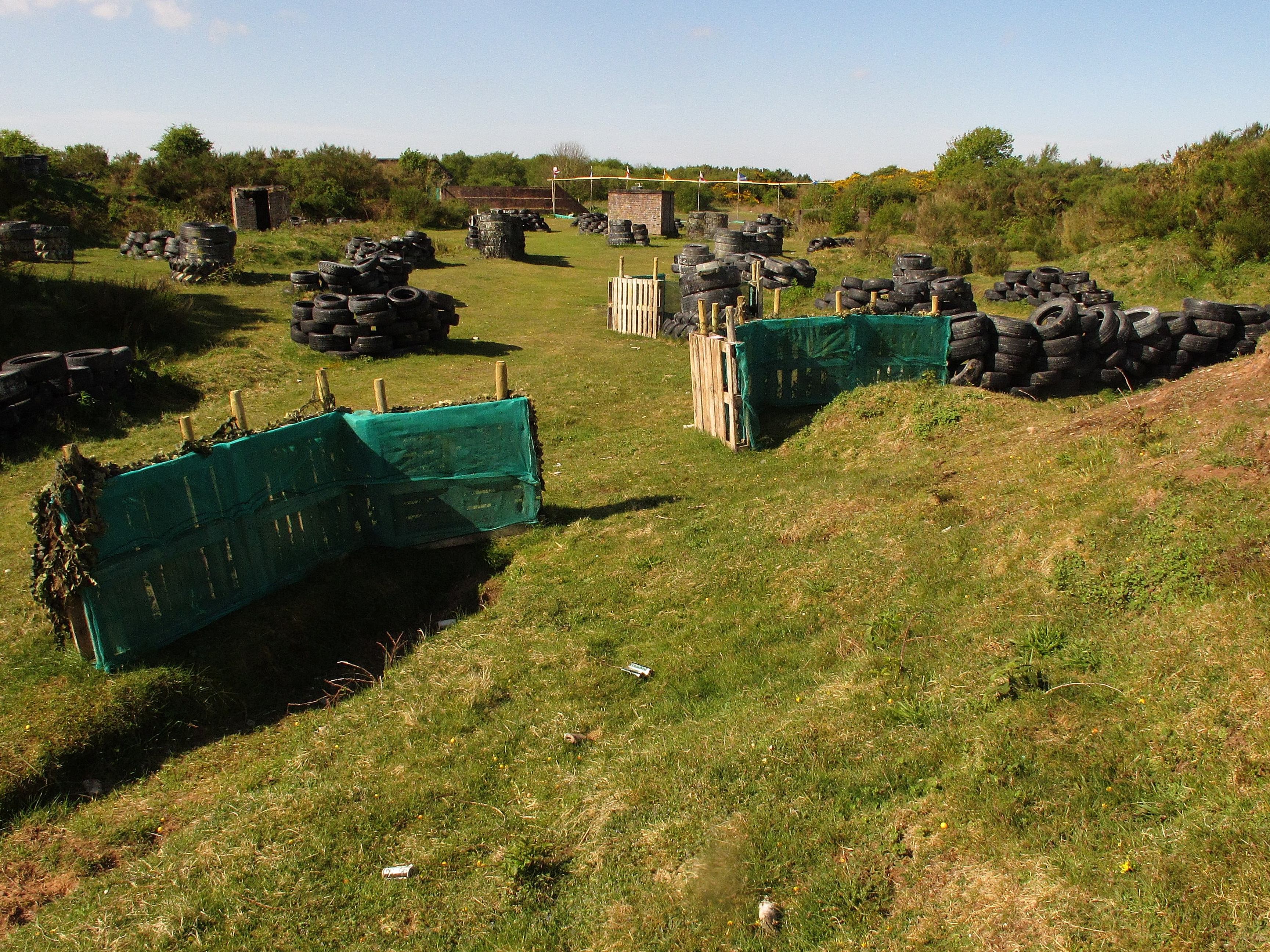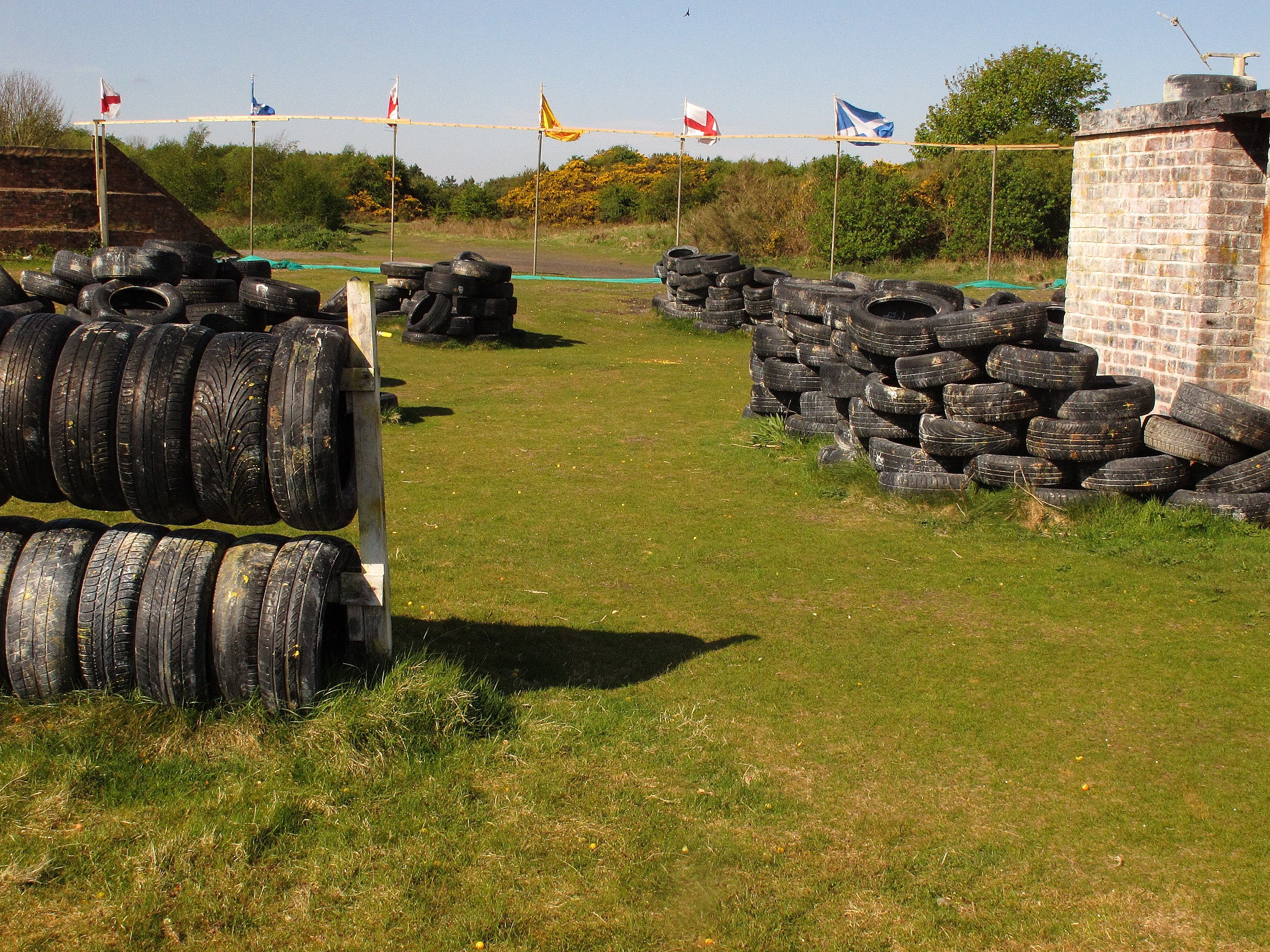Sites have recently been discovered on forest roads. Despite this it is still one of our rarest species, and many colonies are small and on habitats vulnerable to change.
Identification
The Dingy Skipper is our most moth-like butterfly and can be easily overlooked. It flies fast in the sunshine, sometimes appearing little more than a brown blur, and can also be inconspicuous when settled. However, some adults can have a beautiful eye-catching sheen, especially those that are freshly emerged. There are no butterflies that look similar to the Dingy Skipper in the region, but there are several moths: day-flying species such as Common Heath, Burnet Companion, Latticed Heath, Mother Shipton and Silver Y could all be mistaken for a Dingy Skipper, some of which occur in similar habitats at the same time of year.
Life cycle & flight period
One generation a year, the adults peaking between early May and mid-June. Overwinters as a caterpillar.
Larval foodplant
Common Bird’s-foot-trefoil. (In tall, damp grassland the caterpillars feed on Greater Bird’s-foot-trefoil).
Habitats
The Dingy Skipper is usually associated with sunny, herb-rich grasslands on the coast or inland, but it can also occur on sunny forest roads, areas used for recreation and on so-called ‘brownfield’ sites – even the former nuclear power station at Chapelcross! The common characteristic of these habitats is that they are warm, sheltered, sunny and stony or sandy, where a natural flora has developed.
The Dingy Skipper can also be found in tall, damp grassland but such sites appear to be very scarce in Dumfries & Galloway, if present at all.

